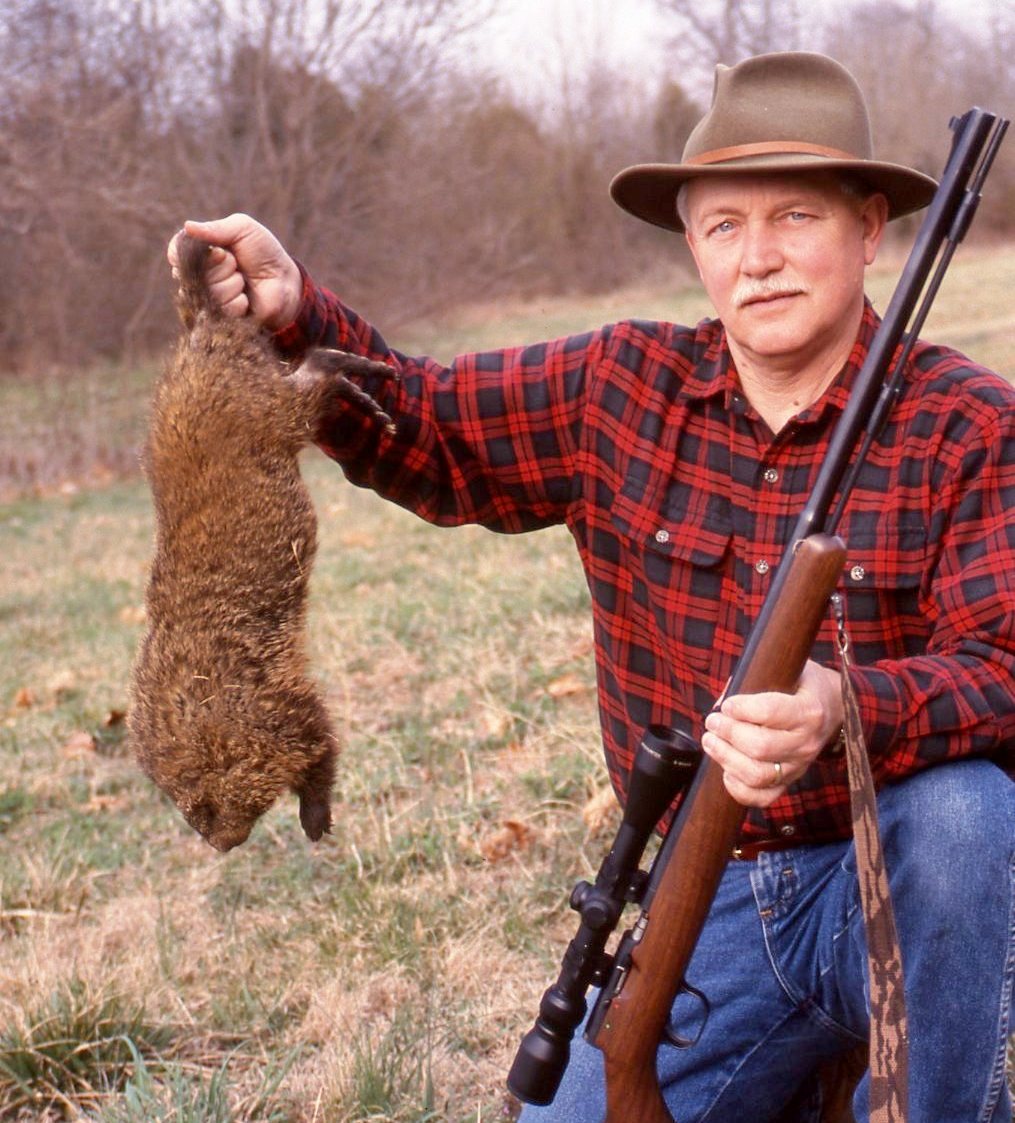Call them groundhogs, woodchucks, or whistle pigs, but grizzled populations of Marnota monax can be a challenge to control. Archers may have 3-D targets to help them tune their hunting and shooting skills, but firearm sportsmen use this often-detested pest to better their game. Most farmers hate groundhogs because they dig huge holes in their fields that can easily upset a wagon full of hay or break an axle on farm equipment. An acre of corn costs about $500 to plant and a few burrows of groundhogs can quickly cost hundreds of dollars in damage. As a result, the “Welcome to hunt groundhogs” sign is often on display. In fact, if you’d like to gain permission to hunt a particular farm, ask if you can hunt groundhogs first, an excellent way to befriend the landowner. Demonstrate that you’re responsible by shooting safely, closing gates, abiding by property boundaries, stopping to say Thank you, and other common courtesies.
 When hunting groundhogs, always be aware of your background, especially if livestock is nearby. Personally, I like the .17 HMR and .22 Winchester Magnum because they have a limited range, small bullet, and greatly reduced possibility of ricochet. In addition, the light report is less likely to garner the attention of neighbors. Back pastures and remote areas are ideal for pre-season “tuning up” using your standard deer-hunting gear. Groundhogs are edible, yet many hunters leave the carcass near the burrow where a fox, buzzard, or coyote will “recycle” the pest.
When hunting groundhogs, always be aware of your background, especially if livestock is nearby. Personally, I like the .17 HMR and .22 Winchester Magnum because they have a limited range, small bullet, and greatly reduced possibility of ricochet. In addition, the light report is less likely to garner the attention of neighbors. Back pastures and remote areas are ideal for pre-season “tuning up” using your standard deer-hunting gear. Groundhogs are edible, yet many hunters leave the carcass near the burrow where a fox, buzzard, or coyote will “recycle” the pest.
Tell us what you think in the comments section below.









![The Best Deer Camp Chili [VIDEO] Deer Chili Ingredients, Tomatoes, Chili Spices](/wp-content/uploads/2015/10/Deer-Chili-Deer-Camp-Recipe-218x150.jpg)








![How to Call Elk Early in the Season [VIDEO]](/wp-content/uploads/2016/08/byers003-218x150.jpg)




![Idiots Disturb Hunter: How Would You Have Handled It? [VIDEO]](/wp-content/uploads/2015/10/DSC00110-e1474487693878-100x70.jpg)
![Albino Buck Shocked to Shed His Antlers [VIDEO]](/wp-content/uploads/2015/10/AlbinoDeer-100x70.jpg)